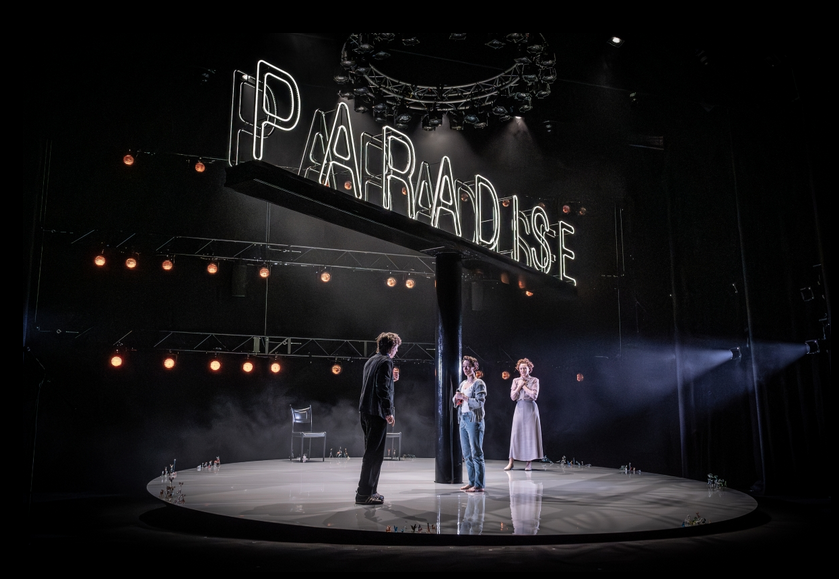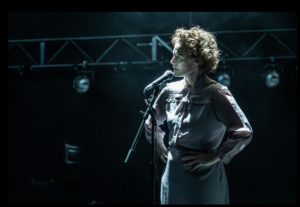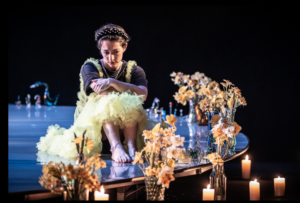
7 – 11 May
To be successful, any production of The Glass Menagerie must deliver a powerful mix of longing and despair. Here, director Atri Banerjee has found inventive ways to do just that, and has creatively revitalised this classic play. Courageously minimalist and non-naturalistic, this is The Glass Menagerie in a fresh new guise. Rosanna Vize’s striking set design features a circular platform above which towers a large rotating dance club sign, its neon lights reading ‘Paradise.’ It is high above, for here paradise is most certainly out of reach. There is little else, leaving an uncluttered space that enables the actors to use expansive movement to convey emotion and meaning. Although the play is set just before World War II, there is music from our own time, and some of the cast are in jeans and trainers. These anachronisms might jar, but they perhaps serve to remind us that the familial tensions focused on in the play are not unique to the 1930s.
The Glass Menagerie is a memory play, narrated somewhat sardonically by Tom Wingfield (Kasper Hilton-Hille) as he recalls life in his family home in the period just before he left, never to return. He tells a story of misfits, people struggling to conform to the expectations of others, whose lives fail to match their dreams. Premiered in 1944, it was Tennessee Williams’ first great success, with much of it is based upon his own family, including his overwrought mother and his mentally fragile sister. In the play itself, fragility is seen in Laura Wingfield (Natalie Kimmerling), a young woman who suffers from severe social anxiety, partly because in childhood she limped and wore a leg brace. Fragility is also symbolised by her collection of glass animals, especially her precious unicorn. Amanda (Geraldine Somerville), her domineering mother, is obsessed with finding Laura a ‘gentleman caller,’ and equally determined to keep her cinema and cigarette-obsessed son Tom on the straight and narrow.

In a performance of considerable depth, Geraldine Somerville portrays Amanda as a woman left deeply damaged when her husband abandoned her. He was a telephone company employee who ‘fell in love with long distance.’ Now her only hope of fulfilment lies in her children, who she strives to force in directions that they are unwilling or unable to take, turning herself into a monster in the process: ‘My devotion has turned me into a witch.’ That self-awareness tempers her monstrousness a little, as does her real affection for her disappointing brood, and her indefatigable optimism. There are flashes of comic bewilderment: ‘Why can’t you and your brother be normal people?’

Natalie Kimmerling gives Laura’s acute shyness vivid physical expression, scuttling like a frightened animal across the stage, curling up into a tight, uncommunicative ball and jamming on headphones. Every gesture emphasises her vulnerability. The play’s most poignant moment comes in the second act when she meets Jim (Zacchaeus Kayode), a kind and thoughtful workmate that Tom has invited round for dinner.

After Jim gently persuades Laura to open up a little and come close to him, we see them dance, once in Laura’s uninhibited imagination, and once in touchingly clumsy, hesitant reality. Laura’s moment of happiness is all too brief, for devastating disappointment soon follows. Her story is the emotional core of the play, where the sense of shattered hope hits hardest. Tom tells us he ran away to sea, but for Laura there is no escape.
★★★★☆ Mike Whitton, 8 May 2024
Photo credit: Marc Brenner

